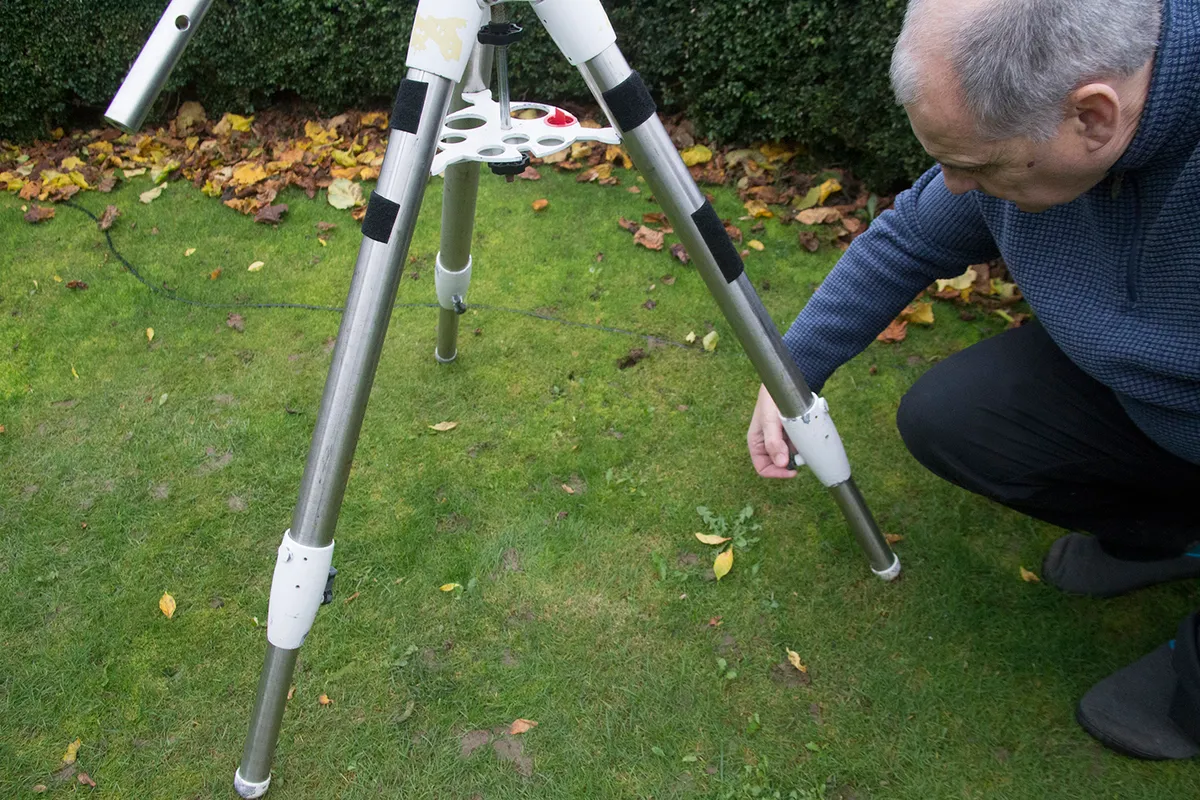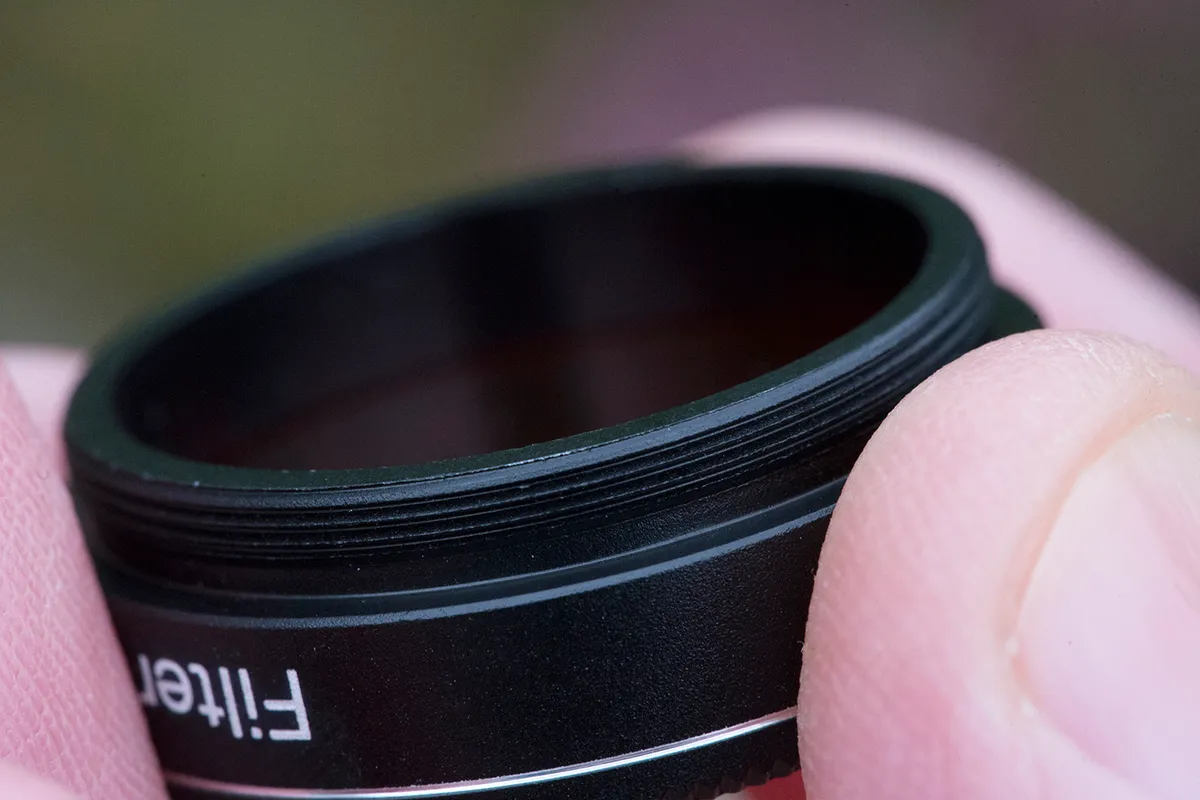Buying a secondhand telescope or other astronomy equipment like binoculars and cameras can be a tricky business. How do you know you're getting a good deal?
There is a thriving market in secondhand telescope and accessories.
This is helped by the fact that astronomers generally take good care of their scope, binoculars or cameras, so when they choose to sell it on it’s usually in pretty good shape.
As well as helping you to save money in what can be an expensive hobby, buying a secondhand telescope has another benefit: the seller can pass on their wisdom.
But it can be daunting for a newcomer to enter the secondhand astronomy marketplace for the first time.
Here we'll take a look at what to ask when buying secondhand telescopes, cameras, mounts, binoculars, filters and eyepieces.
Buying a secondhand telescope

Telescopes are technically the ‘optical tube assembly’ (OTA) only, meaning that it doesn’t come with a mount or tripod.
When deciding whether to buy a secondhand telescope, there are many questions you can, and should, ask.
Has there been any damage to the mirror or lens? Feel free to ask for close-up images to check for scratches or coating blemishes.
Is the telescope tube damaged? Look at pictures of the tube to see if the item has been handled properly.
The odd scratch and scuff to the side is fine, but anything significant should be mentioned in the seller’s advert – it could be a sign of misuse or damage.
Get written confirmation that any ‘wear and tear’ you see has no effect on the optics.
Are all caps and covers supplied? They should be as this ensures the telescope has been adequately stored, so check they’re there.
A question to ask yourself is, what are you going to use the secondhand telescope for?
If astrophotography, consider what images you’re going to take through it.
A field of view calculator will show how deep-space objects look through different telescope and camera combinations.

It’s best to pick up a secondhand telescope in person rather than trusting the fragile instruments to the whims of a courier company. As well as ensuring safe transport, you’ll be able to test the equipment.
You’ll want to check that the focus wheel turns freely and the drawtube extends and retracts smoothly. If inspecting a refractor telescope, check the resistance screw underneath. Does this restrict and loosen the focus action correctly?
Also check the dust and lens caps fit snugly as this prevents moisture building up inside. Then remove the caps to look through the length of the refractor to check it’s clear.
For reflectors, ask the seller’s preferred collimation method. If they don’t know how to collimate, it is likely alignment will be out. This isn’t a problem, but collimation requires additional equipment and practice to perfect.
- For more information about buying a telescope, read our guide on how to choose your first telescope, or the pros and cons of refractor or reflector telescopes.
Buying a secondhand camera

There are many different types of camera that can be used in astrophotography but these fall broadly into three categories: DSLR, CMOS and CCD cameras.
You can do some homework on the suitability of the camera for your setup. The sensor/pixel size against your telescope’s focal length will affect the size of the image you’ll get.
Check out our field of view calculator where you can enter your telescope and camera details to get a good idea of how your setup will perform.
The wrong combination can negatively impact the quality of an astro image, so ensure the setup fits your goals.
Calibration frames are also important when assessing second-hand cameras.
Ask the seller to send you a dark frame – these allow you to assess the amount of noise (unwanted artefacts), hot pixels or amp glow the camera provides.
Dark frames can show if any light anomalies exist.

It’s worth asking what settings the seller has used and seeing what images they’ve captured.
If its a CMOS camera, knowing the gain and offset settings they’ve used will provide a starting point as you experiment with the camera.
For DSLRs, useful settings to know are preferred ISO and exposure times. For more on this, read our DSLR guide.
Ask the seller to send a picture of the sensor to check that it’s clear and free of dust. The sensor is easily accessed in a CCD, and for DSLRs can be imaged by selected the ‘manual cleaning’ setting.
Buying secondhand binoculars

Unlike a secondhand telescope, because of their small size, binoculars can be couriered or posted if packed securely.
If possible, try to hold and look through them in person.
If this isn't an option, getting lots of pictures of the product before payment and delivery is advised.
Check that all covers are provided, and ask whether it comes in a hard or soft case.
Much like a telescope, ask the seller for images of the lenses in good daytime lighting.
Are these clear? Don’t worry about seeing dust as this is unlikely to impact your viewing experience.
What you’re looking for in secondhand binoculars are coating blemishes or scratches on the glass. Ask the seller if there are any focus or usability issues. If the answer is vague, proceed with caution.
If you do manage to test the binoculars in person, try to find a distant object you can focus on. Can you adjust the focus correctly in both eyes to achieve a single clear image?
Pay attention to how much resistance there is when you adjust the focus and if there is any haze affecting the optics.
- For more info, read our guide to the best binoculars for astronomy.
Buying secondhand telescope mounts

So you've secured your quality secondhand telescope. What are you going to mount it on?
Mounts are designed to be robust and a well cared-for secondhand mount is a great purchase.
Research is still important, as purchasing a first Go-To mount can be daunting.
The mount is often more important than the telescope itself, particularly for astrophotography.
Assembling and working these the first time can also be a challenge.
Mounts are another secondhand item we’d most strongly suggest collecting if possible.
Find out where the mount has been stored. If left outside, internal mechanisms could be rusted, affecting performance.
Also check whether it has been serviced: something more common for high-end mounts. This isn’t essential, but servicing is recommended every couple of years to optimise performance.
Ask the seller how the mount has been powered, i.e. via mains or a power pack. You may need to purchase adaptors if the seller isn’t supplying them.

One of the most important attributes of a mount is its payload - the weight of the equipment it can carry - so work out if it will suit the telescope setup you plan to put on it.
If you want to use a mount for imaging, a general rule is to take the mount’s advertised payload and halve it. This will be your imaging payload.
When collecting, ask the seller in advance if they can demonstrate the setup so you can see how it works and if anything is missing.
If the mount comes with a tripod, check the legs extend and tighten, and for signs of rust. Listen to the mount slewing to a target. Does the action sound smooth or are the gears struggling?
- For more info, read our guide to telescope mounts or our pick of the best telescope mounts available.
Buying secondhand filters and eyepieces

You may want filters to fit onto your secondhand telescope and complete your astronomy setup.
But the high quality glass needed for filters and eyepieces means they can be expensive.
They are, however, easy to post so if the seller can confirm (via photos) that they come with dust-free covers and a hard case, these should be fine for delivery.
Filters are delicate and need to be handled with care, so they can be susceptible to damage which you’ll need to check for.
Obvious blemishes due to misuse can be highlighted in photos. It’s perfectly acceptable to ask for close-up images of a filter held up to a light, to check for obvious signs of damage.
If you’re buying filters for astrophotography, it’s always good to see images the seller has taken using them, and know what type of camera has been used.

If it’s a clip-in filter, check in the photo that both tabs are intact and symmetrical, that one hasn’t been bent or warped. This could affect how well the filter fixes to the camera. For screw-in filters check that the threads are clear and not worn or damaged.
Solar filters should only be purchased from a trusted astronomy vendor. The slightest damage to these could cause irreparable damage to eyesight or imaging equipment, so avoid secondhand items.
For eyepieces, check the ‘eye relief’ on the manufacturer’s website. For people wearing glasses this needs to be long enough to view through at a distance. Once again, ask for images of the glass in the eyepiece’s lens elements to check for scratches.
- For more info, read our guide to telescope filters and our guide to eyepieces.
5 tips for buying secondhand astronomy equipment

Get photos and inspect them
Before you buy a secondhand telescope or any other secondhand astronomy equipment, look carefully at any photographs.
Be wary of any adverts using catalogue or website photos for a product, or which have no photos.
Almost everyone has access to a smartphone camera these days, so never be afraid to ask for more photos if you have any doubts.
Make sure it comes with all the parts
If you’re asking for something with multiple parts (such as a star tracker package) ask for pictures of everything being sold, including cables and accessories.
Make sure you check this against a list of the equipment you would expect to get if it was being sold new.
Check for repairs/modifications
It’s not unusual for astronomers to modify kit to adapt it to their needs.
Some of these modifications can improve the quality of the instrument for a specific purpose, but others might not be so welcome.
Always ask whether the seller has modified the kit in any way since they purchased it.
Pick up the item in person if possible
We're used to ordering online and having things delivered, but when buying a secondhand telescope or other astronomy kit, some items are better collected in person.
This means you can check the equipment or find out how to set it up.
Ask ahead to see if there’s an outdoor area to check things over. Perhaps bring a friend to help.
Agree on payment method
If arranging collection of your secondhand telescope, agree the method of payment beforehand.
Some sellers prefer cash, but others will want PayPal or bank transfer.
Have the payment method ready should you wish to accept the item.
With bank transfers, the buyer has less protection.
If you are using PayPal, ensure the seller uses ‘PayPal purchase’, rather than ‘friends and family’, as this option gives more protection.
Where to buy secondhand astronomy equipment

Thanks to the internet and social media, shopping for secondhand astronomy equipment isn’t limited to one or two providers.
It’s worth checking in with local amateur astronomy societies as members regularly sell kit to each other, but there are other places to look for pre-owned astronomy equipment.
Vendors and Websites for secondhand astronomy equipment
Facebook Groups for secondhand astronomy equipment
This guide originally appeared in the January 2021 issue of BBC Sky at Night Magazine.
